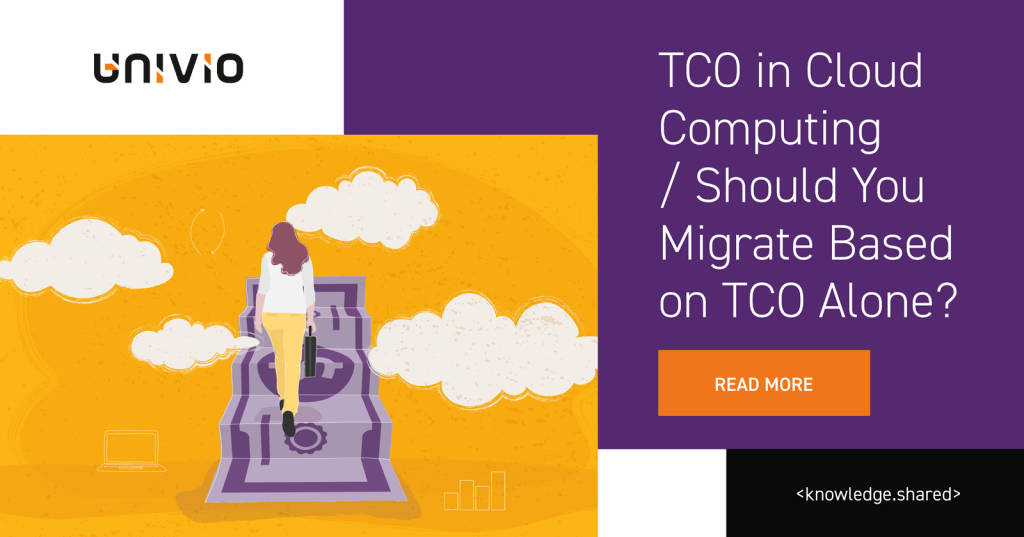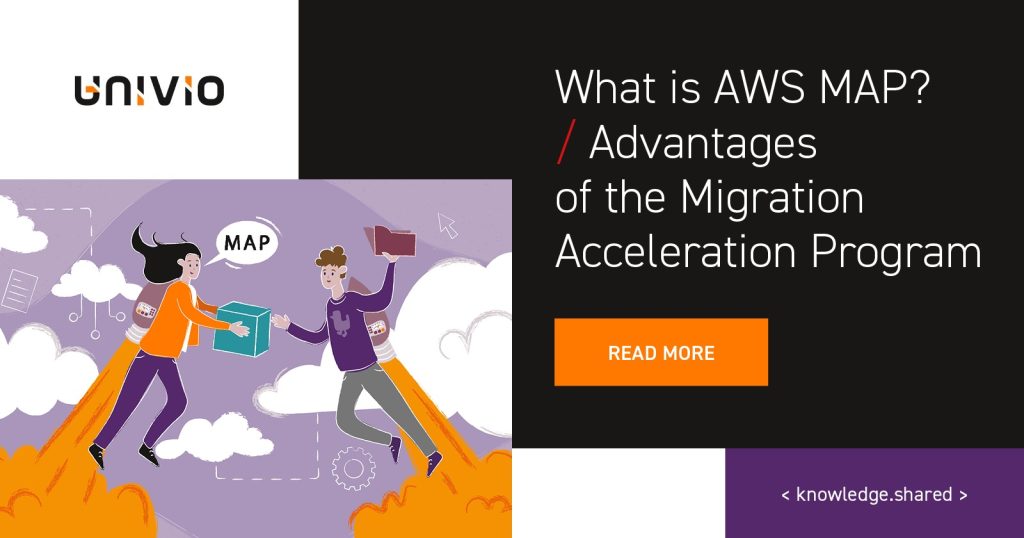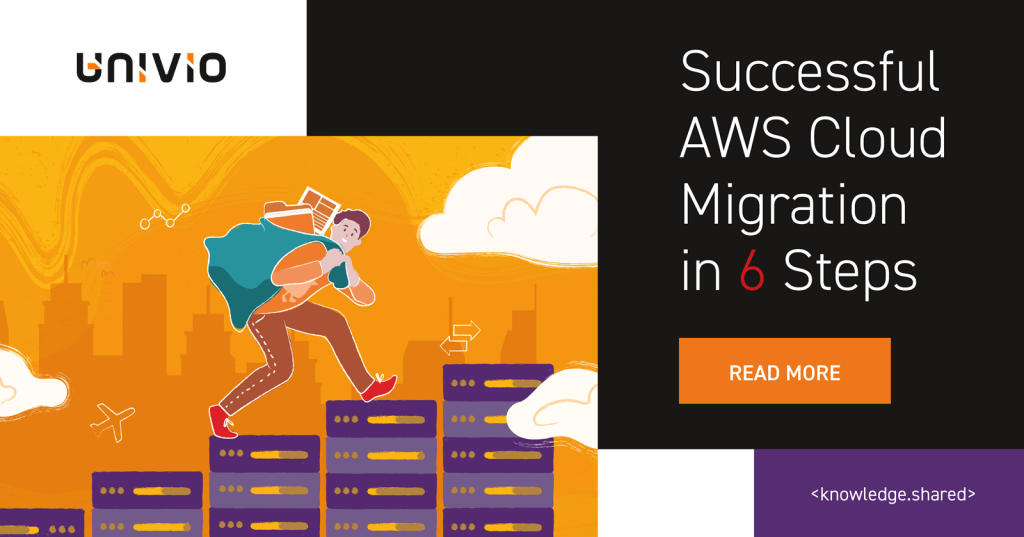Types of Cloud Computing / Choose the Right Path for Digital Transformation
The past two decades have seen rapid growth in e-commerce and a revolution in technology. Among the key changes in the technological field, one of the most significant is the evolution of cloud computing. It has become an integral part of the modern business world, offering organizations new capabilities, efficiency and flexibility.
However, not all clouds are the same, and choosing the right solution is crucial to achieving success in the digital transformation process. Cloud is not equal to cloud, and in order to effectively leverage its benefits, it is necessary to understand the differences between different cloud models and tailor your strategy to your organization’s specific needs and goals.
Types of Cloud Computing
Speaking of cloud computing, we can distinguish several main types: public, private, hybrid, community and edge (Edge Computing) clouds. Each of these types has its own unique features and advantages, which translate into an organization’s ability to adapt to changing market and technological conditions.
So let’s consider the differences, as well as the benefits of the basic types of cloud computing.
Public Cloud
This kind of infrastructure is provided for use by a wide range of customers. Examples of providers include Amazon Web Services (AWS), Microsoft Azure and Google Cloud Platform (GCP). Public clouds are widely used in business, especially for storing data, running servers and developing web applications. One of the main advantages of the public cloud is its scalability, but there are also some challenges, such as data security issues. The main advantage is the wide availability of both simple services (servers, web services) and complex business applications running as SaaS (PowerBI in Azure or Sagemaker in AWS). One should also not forget the economies of scale that make these services capable of being cost-effective.
Private Cloud
Available only to a specific organization or enterprise. It can be managed in-house or hosted by cloud providers. Private cloud services allow full control over resources and data storage, which is important for organizations with high security and compliance requirements. They are often used by industries that deal with sensitive data, such as the financial and healthcare sectors. However, due to its dedicated nature, limited scalability and lower cost flexibility should be kept in mind.
Hybrid Cloud
Combine both public and private clouds. It allows flexible scaling of resources depending on an organization’s needs and preservation of content of particular relevance within the company. An example of a hybrid cloud application would be storing and processing large data sets in a public cloud and sensitive data in a private cloud.
Community Cloud
That kind of cloud model is shared by a group of entities with similar interests. For example, organizations in a particular industry can create a shared cloud to share resources and costs. This solution allows for efficient use of resources and collaboration within an industry.
Edge Cloud / Edge Computing
Infrastructure that enables data processing close to the source of data generation. It’s important in the context of the Internet of Things (IoT) and 5G technologies because they allow for rapid analysis and response to data in real time. Examples of applications include smart cities, traffic management and public safety. So, wherever network latency due to the distance between the device and the cloud matters.
Cloud Solutions as an Important Part of Digital Transformation
Cloud computing is the cornerstone of enterprise digital transformation, enabling companies to adapt to changing market conditions, innovate and effectively use technology for business growth.
Here are some aspects that are particularly related to the use of cloud solutions in business.
Flexibility and Scalability
The cloud allows organizations to adapt resources to changing needs. This means that companies can scale their infrastructure according to workloads, avoiding unavailable systems while using resources efficiently and no need for long-term commitments or stock purchases.
Innovation and Competitiveness
Cloud computing provides organizations with tools and technologies that enable faster development and implementation of innovative solutions. This enables companies to remain competitive in the market.
Global Reach
Cloud providers offer infrastructure in many regions of the world, which, through solutions such as content delivery networks (CDN), enable organizations to have a global presence and deliver high-quality services to customers around the world. Thanks to a high degree of standardization, we get exactly the same services in different regions of the world, which makes them easier to manage.
Reducing Operational Costs
Migrating to the cloud can bring significant operational savings compared to traditional data centers. Companies do not need to invest in expensive infrastructure or incur hardware maintenance costs.

Availability and Business Continuity
Cloud services enable solutions with high availability and fault tolerances, which translates into business continuity and minimized losses in case of technical problems.
Challenges Associated with Different Types of Clouds
The most common and significant hurdles encoutered when choosing a cloud includedata security, management and control, as well as cost and scalability.
Data security
With public clouds, there is a high level of concern about the security of data stored on the provider’s infrastructure, especially sensitive information such as financial or personal data. Appropriate security measures, such as encryption, access controls and security monitoring, are necessary.
With private clouds, data security is often higher because the organization has full control over the infrastructure. However, there are challenges in managing internal security and the need to secure access to private clouds from unauthorized individuals.
In hybrid clouds, the challenge is to ensure security consistency between different cloud environments, both public and private. It is necessary to maintain uniform security standards across the hybrid environment.

Management and Control
Governance and control are key challenges associated with different types of clouds. For public clouds, organizations must trust the provider to manage the infrastructure. This means that full control over the cloud environment is often lacking, which can be a challenge for some applications and data.
In private clouds, organizations have more control over the infrastructure, but bear the responsibility for its management. This can involve hiring IT infrastructure specialists, which comes at an additional cost.
In hybrid clouds, management and control become more complex, as companies need to manage both public and private infrastructure. It is necessary to ensure consistency between different environments and tailor management to the specific needs of the organization.
Cost and Scalability
With public clouds, costs can be difficult to predict, especially when an organization uses different cloud services. Scalability is one of the main advantages of public clouds, but it can lead to uncontrollable cost increases if not properly managed. The ease of purchasing services and paying according to consumption may end up surprising you when you receive your invoice.
In private clouds, organizations have more control over costs, but face higher infrastructure management costs. Scalability can be more limited than in public clouds. In the part maintained as private – it is not particularly different from the challenges in the private cloud.
In hybrid clouds, costs can vary, and scalability depends on how effectively the hybrid environment is managed. Organizations need to monitor and manage costs in both environments, public and private, to keep budgets under control. Teams working in such an environment must also be dual-competent, which in itself can already be a challenge.
Preparing for the Cloud Revolution
The move to cloud computing is a revolutionary change in the way organizations operate. Preparing for this process requires the right approach and commitment. Here are two key points that companies need to consider when preparing to use cloud computing resources.

A. Organizations Must Operate Differently After Migration
Migrating to the cloud means that organizations must change their approach to many aspects of their operations. Here are some of the key changes:
- Agility and speed: after migration, organizations face the need to be more agile and respond faster to changing market conditions. Cloud computing enables flexible scaling of resources to deliver applications and services faster (time to market).
- New business models: the use of cloud computing opens the door to new growth opportunities. Companies must be ready to adapt their approach to take advantage of these options and deliver innovative products and services.
- Organizational culture: organizations must develop a culture that fosters innovation, collaboration and continuous improvement. New technologies and tools require employee acceptance and commitment.
- Risk and security management: data security and risk management are becoming a priority. Organizations must invest in the right solutions and practices to protect their assets and data.

B. A Comprehensive Approach To Change is Needed
Preparing for the cloud revolution requires a comprehensive approach. Here are some key aspects that companies need to pay attention to.
- Inventory and analysis: organizations should thoroughly understand their existing resources, applications and processes. Inventory is key to choosing what to move to the cloud and how.
- Migration plan: developing a detailed migration plan is an essential step. The plan should address goals, timelines, resources and database security issues.
- Management and employee involvement: management should prioritize and support the change, and employees should be properly trained and involved in the migration process.
- Managing costs and monitoring effects: controlling costs and monitoring the effects of migration are key. Organizations should track costs and analyze whether they are achieving their goals.
- Optimization and continuous improvement: after migration, organizations should continuously strive to optimize the use of cloud computing power, improve processes and refine their approach to using the technology. A cloud service provider and migration partner can help.
Preparing for the cloud revolution is a process that requires careful planning and commitment. Organizations that embrace these challenges and adapt to the new reality will be better prepared for the future and able to effectively take advantage of the opportunities that cloud computing brings. In this process, the support of a partner can be important to facilitate the first steps and minimize the risks associated with the change process itself.







